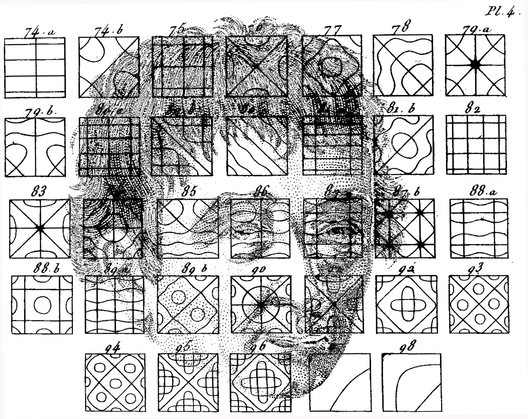Ernst Chladni1756–1827
Chladni figures are a visual manifestation of sound vibrations. On the basis of his studies of sounding bodies Chladni has been called the father of acoustics. In 1787 he investigated the vibrations of flat plates, and the patterns produced by certain sounds. He scattered fine sand evenly over a horizontal glass plate, clamped at one end, and set it in vibration with a violin bow; symmetrical patterns were formed where the sand gathered. That is, the black lines represented the parts of the plate that vibrated least and sand collected in the areas that were relatively still. Chladni’s interest in the figures arose from hearing different sounds produced by vibrating plates: “I had observed that a sheet of glass or metal gave very different tones if it was struck when held in different positions”. He then related these different tones to the patterns of vibration of the plates, which could be shown by configurations in the sand. The sounds and patterns varied with the points at which the plate was held. Initially round plates were used, and he experimented with a variety of shapes, like triangular, rectangular, hexagonal, semicircular, and elliptical plates. However, bowing square plates became the standard procedure. One of the features of the Chladni figures is that they could be analysed quantitatively. Chladni is shown in an array of figures formed by vibrating a flat, sand-strewn plate.
